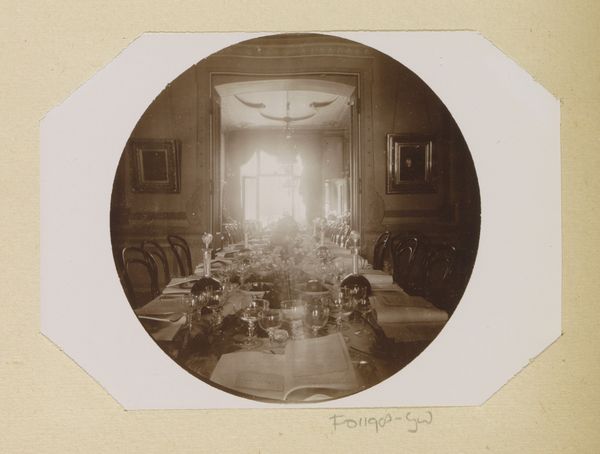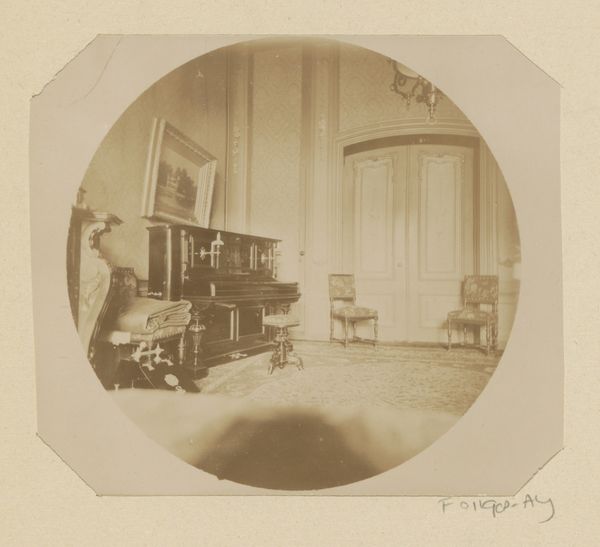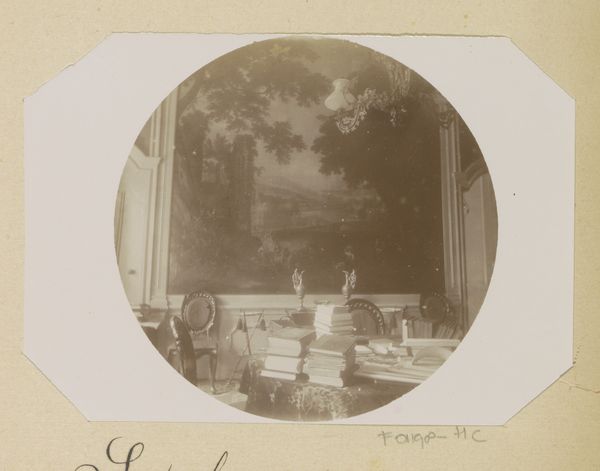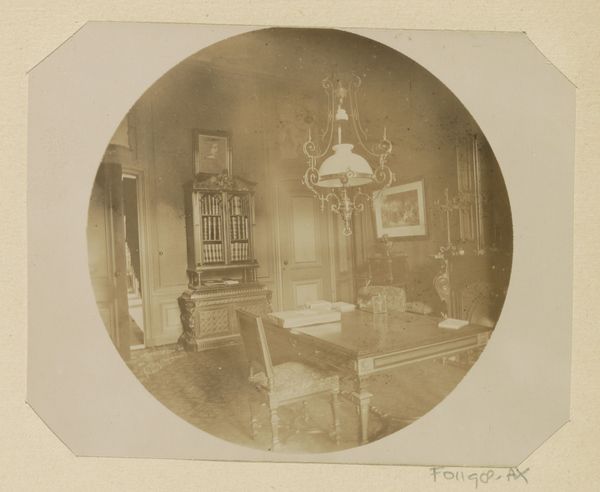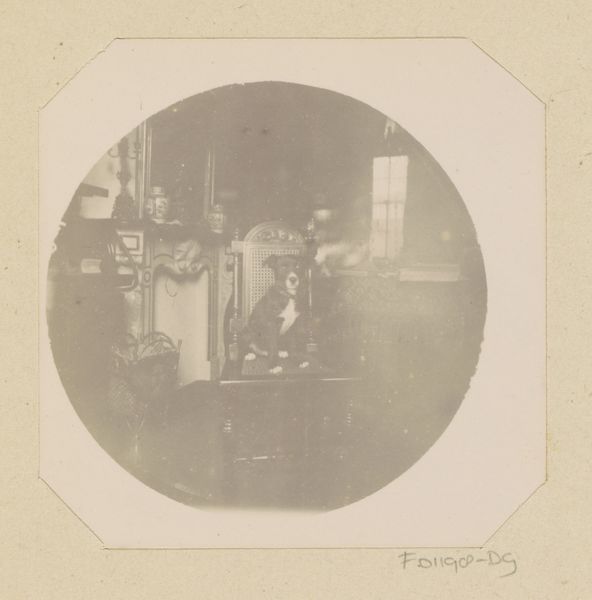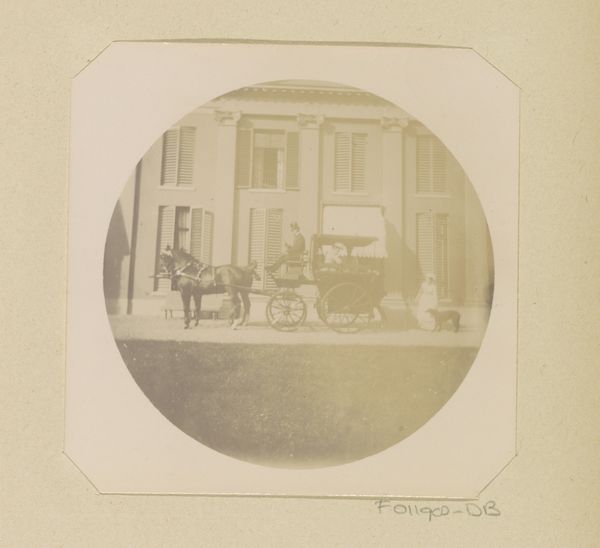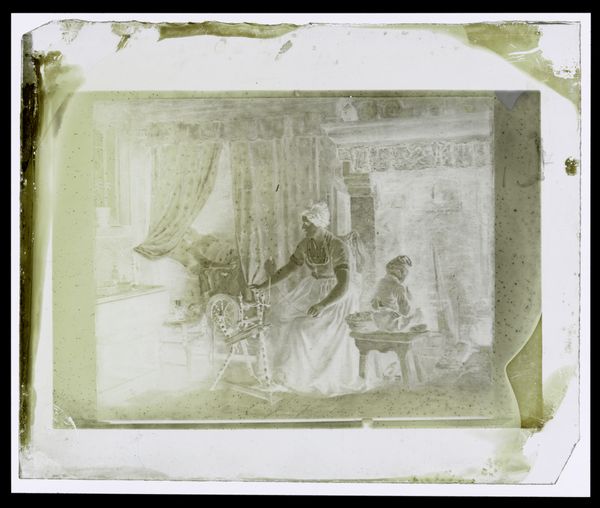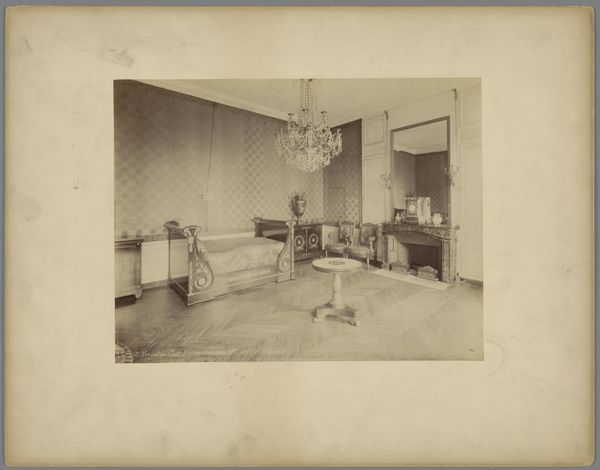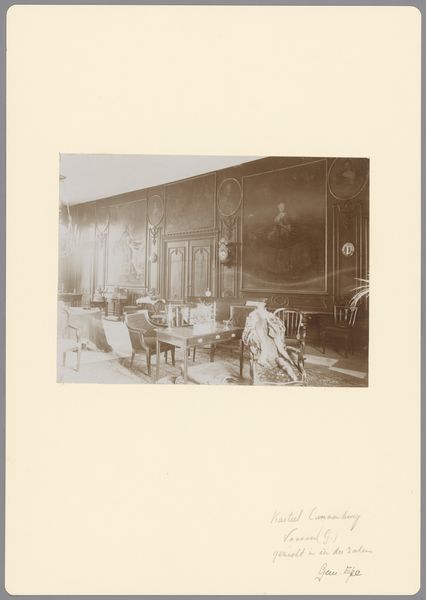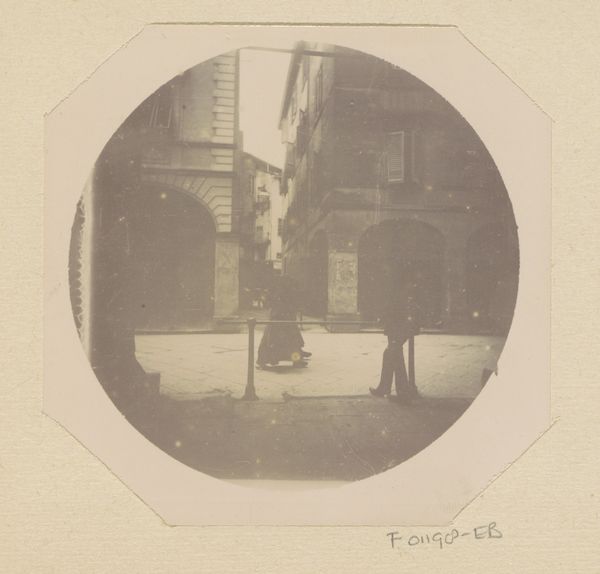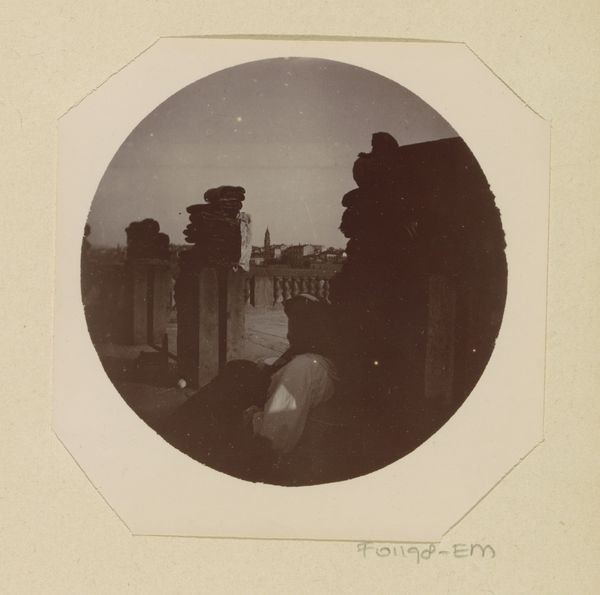
Muurschilderingen van Dirck Dalens III in de woning aan Herengracht 458, Amsterdam 1893 - 1899
photography, albumen-print
landscape
photography
tonal art
albumen-print
Dimensions: height 90 mm, width 126 mm
Copyright: Rijks Museum: Open Domain
Editor: This albumen print, “Mural Paintings of Dirck Dalens III in the House at Herengracht 458, Amsterdam” was captured between 1893 and 1899 by Johanna Margaretha Piek. It shows what looks like an affluent domestic interior, including a landscape mural and a seated figure absorbed in an activity. What strikes you most about this image? Curator: The most compelling aspect, beyond the photographic depiction, is the chosen subject: a photograph OF mural paintings. This places the art object at a remove. Consider the role of photography at the end of the 19th century: it was democratizing art by allowing images to be widely reproduced and disseminated. This image provides access to a private interior, displaying wealth through art and design. Does the landscape scene feel consistent with the decor of the rest of the house? Editor: I see what you mean, the photograph is about capturing the reproduction of art, almost doubling down on access. I do find the mural’s subject rather standard as opposed to the formality suggested by the furniture and table arrangement. What can that tension suggest? Curator: Perhaps it suggests the negotiation between public aspirations and private identity. The Herengracht, as a prominent canal, embodies Amsterdam’s wealthy and powerful class, where they maintained elaborate houses that reflected their status, both inwardly through their interiors and outwardly towards society. But then, who has access to view that mural other than residents and their guests? Does it perhaps hint at tensions between curated public personas and desired private retreats? Editor: So the photograph provides a window into not just art, but also social dynamics? I hadn’t considered the choice of subject itself to be so critical to understanding the picture's value. Curator: Precisely! It encourages us to look at art not only for aesthetic appreciation, but as historical documents reflecting societal structures and aspirations. Editor: I’m beginning to appreciate how the art object's existence, representation, and distribution are indicative of historical circumstances and power dynamics. Thanks so much for the guidance!
Comments
No comments
Be the first to comment and join the conversation on the ultimate creative platform.
